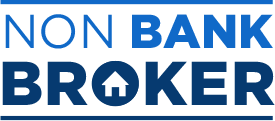First home buyers often struggle to find a home loan to suit their situation, but often the near prime home loans might suit when the banks prime home loans are ruled out.
These near prime home loans have a more lenient criteria when compared to the banks, and they lend up to 90% too which means you just need a 10% deposit.
Sometimes it’s about having options that will work.
How Near Prime Home Loans Work
So how do these near prime home loans work?
Like all lenders, the non bank lenders have criteria but it’s more flexible than most banks.
They will now lend up to 90% so that means you just need a 10% deposit.
Some specific criteria is:
- You must have a credit score of 600+
- You can have one or two defaults on your credit check, but these must be explained and paid.
- You must have a minimum of 5% saved for the deposit (genuine savings) with the other 5% from any legal source
They are more flexible when looking to prove income too.
- Wages & Salary – accepted in the same way as a bank would view this.
- Overtime or contracted income – can be included if shown as regular
- Self employed income included with a minimum of 1-year (banks generally need 2-years)
- Benefits can be included if ongoing
- Boarder income included
These non-bank home loans are more flexible but are also always a bit more expensive.
You need to pay fees for these loans including the lenders application fee of $705 and the adviser fee of $3,600 and then the interest rates are a bit higher than banks too.
They are:
- under 80% – special rate 8.90%
- 80% – 85% – from 9.15% – 9.65%
- 85% – 90% – is 10.15%
As you can see, when compared to a banks home loan this near prime option is a bit more expensive BUT it may allow you to buy your first home when the banks are saying NO.
If you were getting a home loan to 90% with ASB today (23rd January 2024) then you would be paying 9.39% (Housing Variable 8.64% plus low equity margin 0.75%)
The key is to assess things and make an informed decision.
Plan To Get To A Bank
As mortgage advisers we use non bank lenders to provide solutions when the options that banks have don’t work.
But we also understand that these options are more expensive, and for this reason we like to always look at what will be needed to get the lending refinanced to a bank in the future.
In many cases the issues just need a bit of time and they will resolve themselves:
- House values generally increase and we’re expecting this over the next 12-months and beyond – you could see an increase in the value by 10% and then you have 20% equity which makes you a lot more attractive to a bank.
- Incomes increase over time, and for self employed having another year of proven income means you could fit the bank criteria when you don’t right now.
- Blemishes on your credit check don’t last forever, and so that may look better to a bank in a year or two as well.
We know that you have paid a fee of $4,305 and maybe you are paying an extra 0.76% (10.15% – 9.39%) so the interest costs is a bit more, but it may be a small cost to pay for buying now when you compare it to what you may lose by waiting and seeing those house prices increase.

